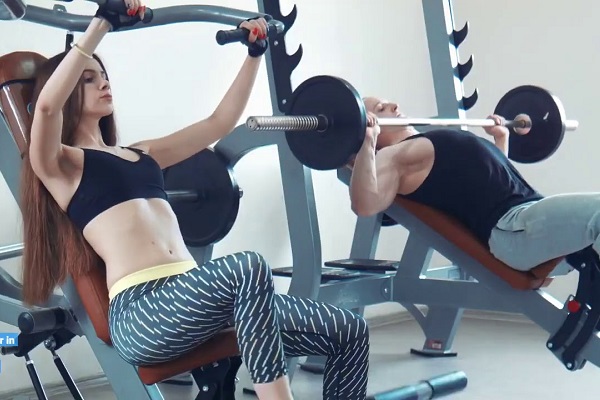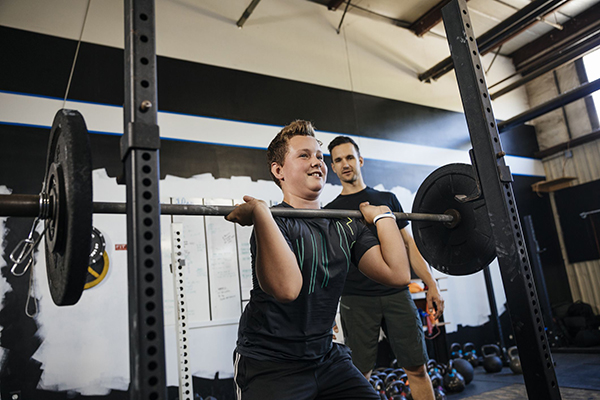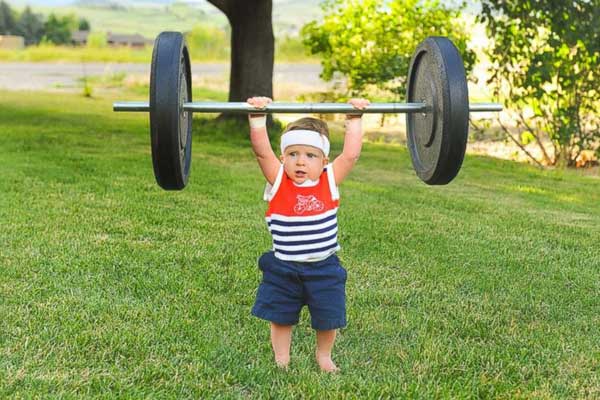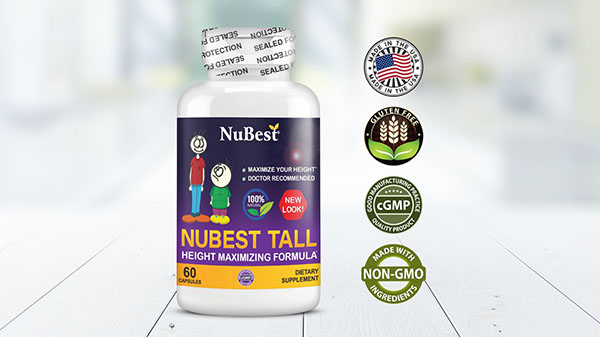According to scientific principles, gym exercises cannot stop the body from growing in height or inhibit the growth of bones. On the contrary, bodybuilding exercises will help strengthen bones and prevent osteoporosis. To better understand whether gym training hinders height growth, please refer to the following article by Howtogrowtaller.
Does gym affect height growth?
It is hard to find any industries where myths and half-truths are sticking around as much as the health and wellness industry, irrespective of what science and experts have to say. One of the most often asked questions in medical offices and fitness centers is “Does gym stop height increase?”. If you are a parent of a child under the age of 18, it is understandable that you wonder whether all the exercises and training workouts your child is performing at the gym or as part of a sports team can stunt their vertical body growth. This is a totally legitimate concern; however, the good news is your child does not have to stop doing their gym exercises.

So, where does the myth that gym stops height growth originate from?
Let’s go back to 1964 in Japan where this myth first started. A group of researchers found that children who work hard during their growing years end up having short stature. Their justification for this is when children are in puberty, physically excessive work will cause damage to their growth plates and make them close earlier, thus stunting their growth process. However, their studies have failed to take into consideration one crucial factor that is the vast malnourishment among Japanese children at that time. This is the ultimate culprit for their short stature instead of working hard on the field or in factories. Unfortunately, parents at the time were misled by these articles and magazines about gym effect on height as well as by gossips from their friends, which eventually makes this myth even more popular.
Does lifting weights stunt growth?
The misconception that gym affects height growth persists until now probably because people are afraid working out may lead to injuries to active growth plates, the “engine” behind human vertical growth for children and teenagers. Notwithstanding this, stunted growth can result from weights that are too heavy, poor form, and a lack of supervision. It is not entirely the result of weight lifting or gym exercises.
What this myth fails to address is you are susceptible to a risk of injury in almost any type of sports or recreational activity. In fact, growth plates are involved in between 15 and 30 percent of all childhood fractures. As the cartilaginous areas of growing tissues at the ends of long bones, your growth plates will turn into hardened bone when you reach physical maturity, mostly after you have gone through puberty. These plates are softer during development, and therefore more subject to damage. This does not mean a teenager or an adolescent should avoid gym exercises or weight lifting simply because the growth plates are susceptible to damage.

Can gym affect height, according to scientists?
There is no scientific research or evidence supporting said myth whatsoever. The shared thought among medical professionals is that gym exercises are safe for kids under 18 as long as they are properly applied. A properly designed and supervised training program engenders various benefits, namely:
- Decreasing rates of sports-related injury and fracture risk
- Increasing strength and bone strength index
- Growing interests in fitness and self-esteem.
At what age should people begin their gym journey?
Though in the middle of their height growth process, children and teenagers from 12 to 16 years old are yet to develop muscles and skeletal systems strong enough for intense gym exercises. As a result, when going to the gym at this age, all of the exercises will directly affect the vertical skeletal system. For this age group, the recommended exercises should be simple such as swinging or rope skipping so that they can avoid causing damage to their growth plates while still triggering growth hormone production effectively.
Once they reach 17 years of age, they can consider increasing the intensity of their training programs. At this age, both their muscles and skeletal system are strong enough for intense gym exercises, including weight lifting. From a scientific point of view, gym exercises will help make their skeletal system and muscles strong, healthy, and resistant to osteoporosis. For this reason, when you turn 17, you can take advantage of gym exercises to not only develop a toned body but also promote overall body development.

Not letting gym affect height growth
It should be noted that in order to enjoy the profound benefits of gym exercises, apart from choosing appropriate exercises, performing these exercises properly is vitally important. When you hit the gym, bear in mind the following advice:
- Warm up thoroughly before performing any exercise to avoid injuries during training.
- Do not perform exercises that affect the spine such as weight lifting in the morning because it is the time when your body reaches its maximum height (this height will be shortened throughout the day due to gravity, which Howtogrowtaller.com has discussed in another article). You should only do weightlifting in a lying position to avoid adverse effects on your spine.
- The exercise intensity should fit your body. Excessive exercise should be avoided at all costs.
After exercising at the gym, you need to have sufficient rest for your muscles to have time to recover and grow. In addition, a balanced and healthy diet is a crucial addition to your exercise routine. Your daily diet should be rich in protein, fiber, calcium, and vitamins. You should also lead a healthy lifestyle, go to bed before 11 p.m., and say “no” to staying up late to play video games or binge-watch your favorite TV series. Those things would actually stunt your growth, not the beneficial gym exercises. What is more, do not let stimulants such as alcohol, beer, or tobacco “infiltrate” your lifestyle during your growing years as they are terribly harmful to your overall body development, let alone your height growth.
Now that you know the answer to the question “Does gym stop height increase?”, you can enjoy the many benefits it offers. Still, no matter how much you are into fitness, if you are still a teen or an adolescent, make sure you are supervised by a certified personal trainer, coach, or educator who has knowledge and experience in designing and supervising gym exercises for young people. Gym exercises are extremely good for health in adulthood and have nothing to do with height shrinkage as rumored.
NuBest Tall is a growth supplement made by NuBest company. It is formulated with Calcium, Collagen, herbs and nutrients claimed to promote bone growth of growing children and teenagers. Click here for more details.

Directions: For children (5+) and teenagers who do not drink milk daily.
+ Under the age of 10: Take one (1) capsule twice daily about 30 minutes before meals or 1 hour after meals.
+ Ages 10 to teenagers: Take one (1) capsule three times daily about 30 minutes before meals or 1 hour after meals.
See the review of NuBest Tall height increase pills- Related post: 5 best exercises to increase height
